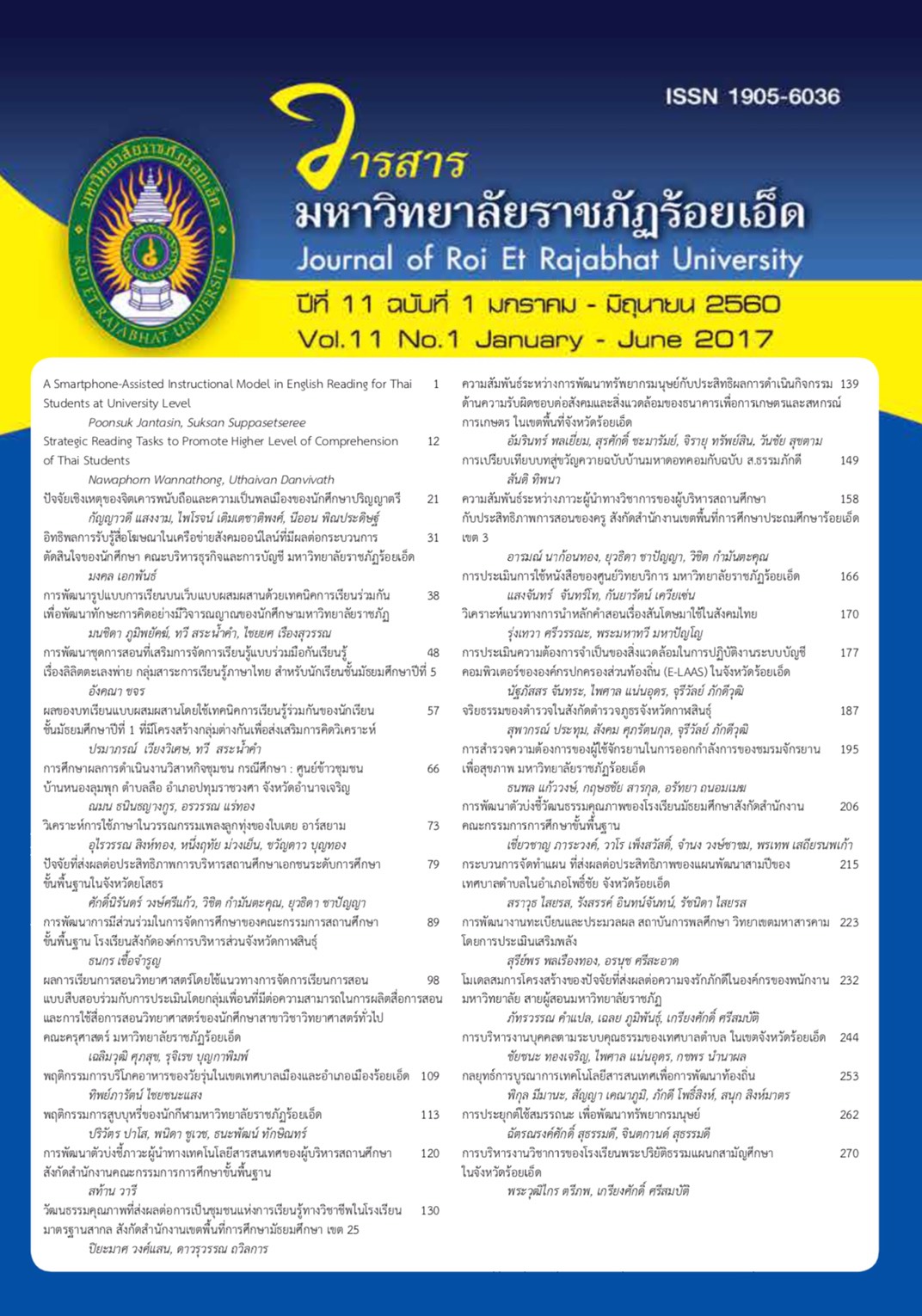An Analytical Study of the Way of the Santosa Principle Using in Thai Society
Keywords:
The doctrine of Santosa, The Thai society, The way of the doctrineAbstract
The main objectives of this thesis are to 1) study the contentment from Tipitaka and the other Theravada Books, 2) study the doctrine of the contentment and the way of Bra Thera and King Rama IV, 3) analyze the application of the mentioned doctrine in Thai Society. From the study, it was found that Santosa is happiness and satisfaction in people’s minds. It is the opposite way to the greediness, and its supporting moral principles are effort and carefulness. The Santosa results in the great heart and prevents one’s mind from greediness. From the study Tipitaka and the other Theravada Books found that Santosa roots from a Pali word “Suntutthi” which means “the satisfaction in what one possesses”. For monks, the Santosa is used as the fundamental practice for spiritual development. For layman, it is the principle for peaceful household affair and self-regulation. From the study in the way of Bra Thera and King Rama 9 is found that even though they have different ways of teaching, all are in accordance with the doctrines in Tipitaka. One thing in common for Bra Thera and King Rama 9 is selfsatisfaction. The analytical study in application of The Santosa in Thai Societies stated that it can promote
problem solving from within as follows; Family members should be cultivated how to solve problem with Santosa. Santosa together with other moral principles should be taken into account including the Principle of Sufficiency Economy to solve economic problems. In terms of political solution, people who are legal to vote should be content with the representatives who take Santosa as their moral principles.
References
สมเด็จพระศรีนครินทราบรมราชธานี. (2543). รวมธรรมะ. กรุงเทพฯ : อัมรินทร์พริ้นติ้ง แอนด์
พับลิชชิ่งจำกัด.
ธรรมสภาและสถาบันบันลือธรรม. (2549). คำสอนของพ่อ. กรุงเทพฯ : ธรรมสภาและสถาบันบันลือธรรม.
พระธรรมสิงหบุราจารย์. (2547). การทาพระนิพพานให้แจ้ง. กรุงเทพฯ : รุ่งเรืองวิริยะพัฒนาโรงพิมพ์.
พระพรหมคุณาภรณ์ (ป.อ.ปยุตฺโต). (2551). พจนานุกรมพุทธศาสตร์ ฉบับประมวลธรรม. พิมพ์ครั้งที่ 17.
กรุงเทพฯ : โรงพิมพ์มหาจุฬาลงกรณราชวิทยาลัย.
พระไพศาล วิสาโล. (2553). มรรคาแห่งชีวิต. กรุงเทพฯ : พรีมา พับลิชชิ่ง.
พระครูกัลป์ยาณสิทธิวัฒน์. (มปป). เอตทัคคะในพระพุทธศาสนา. กรุงเทพฯ : วัดราชสิทธาราม.
พระมหาวุฒิชัย วชิรเมธี. (2552). เคล็ดลับดับทุกข์. กรุงเทพฯ : พิมพ์ดี.
มหาวิทยาลัยมหาจุฬาลงกรณราชวิทยาลัย. (2535). พระไตรปิฎกภาษาบาลี ฉบับมหามหาจุฬาเตปิฎก 2550. กรุงเทพฯ :
โรงพิมพ์มหาจุฬาลงกรณราชวิทยาลัย.
อานนท์ อิศรากูร ณ อยุธยา. (2515). มนุษย์กับสังคม. พิมพ์ครั้งที่ 2. กรุงเทพฯ : บำรุงนุกูลกิจ.
Published
How to Cite
Issue
Section
License
บทความที่ได้รับการตีพิมพ์เป็นลิขสิทธิ์ของวารสารมหาวิทยาลัยราชภัฎร้อยเอ็ด
ข้อความที่ปรากฏในบทความแต่ละเรื่องในวารสารวิชาการเล่มนี้เป็นความคิดเห็นส่วนตัวของผู้เขียนแต่ละท่านไม่เกี่ยวข้องกับมหาวิทยาลัยราชภัฎร้อยเอ็ด และคณาจารย์ท่านอื่นๆในมหาวิทยาลัยฯ แต่อย่างใด ความรับผิดชอบองค์ประกอบทั้งหมดของบทความแต่ละเรื่องเป็นของผู้เขียนแต่ละท่าน หากมีความผิดพลาดใดๆ ผู้เขียนแต่ละท่านจะรับผิดชอบบทความของตนเองแต่ผู้เดียว



